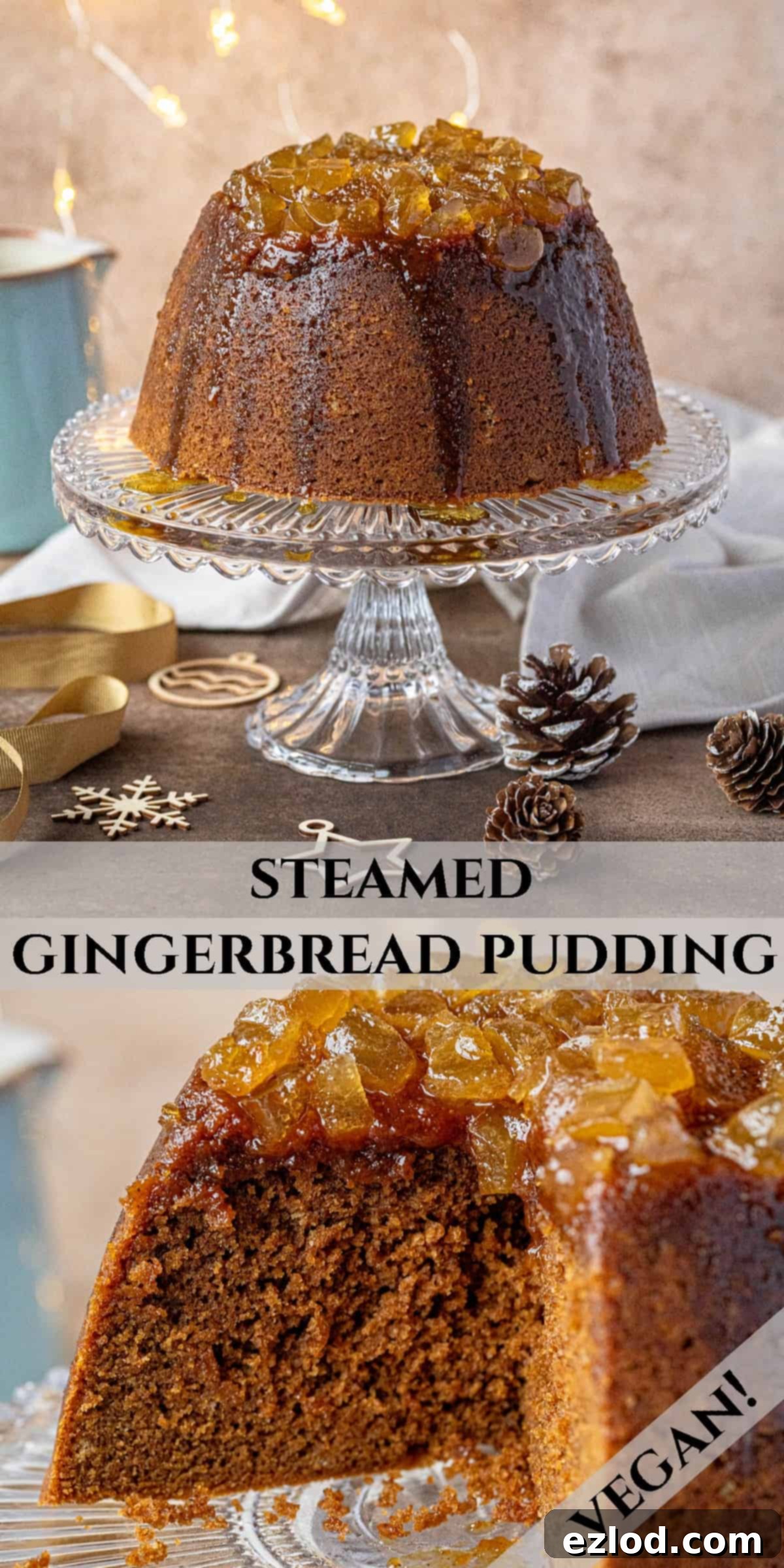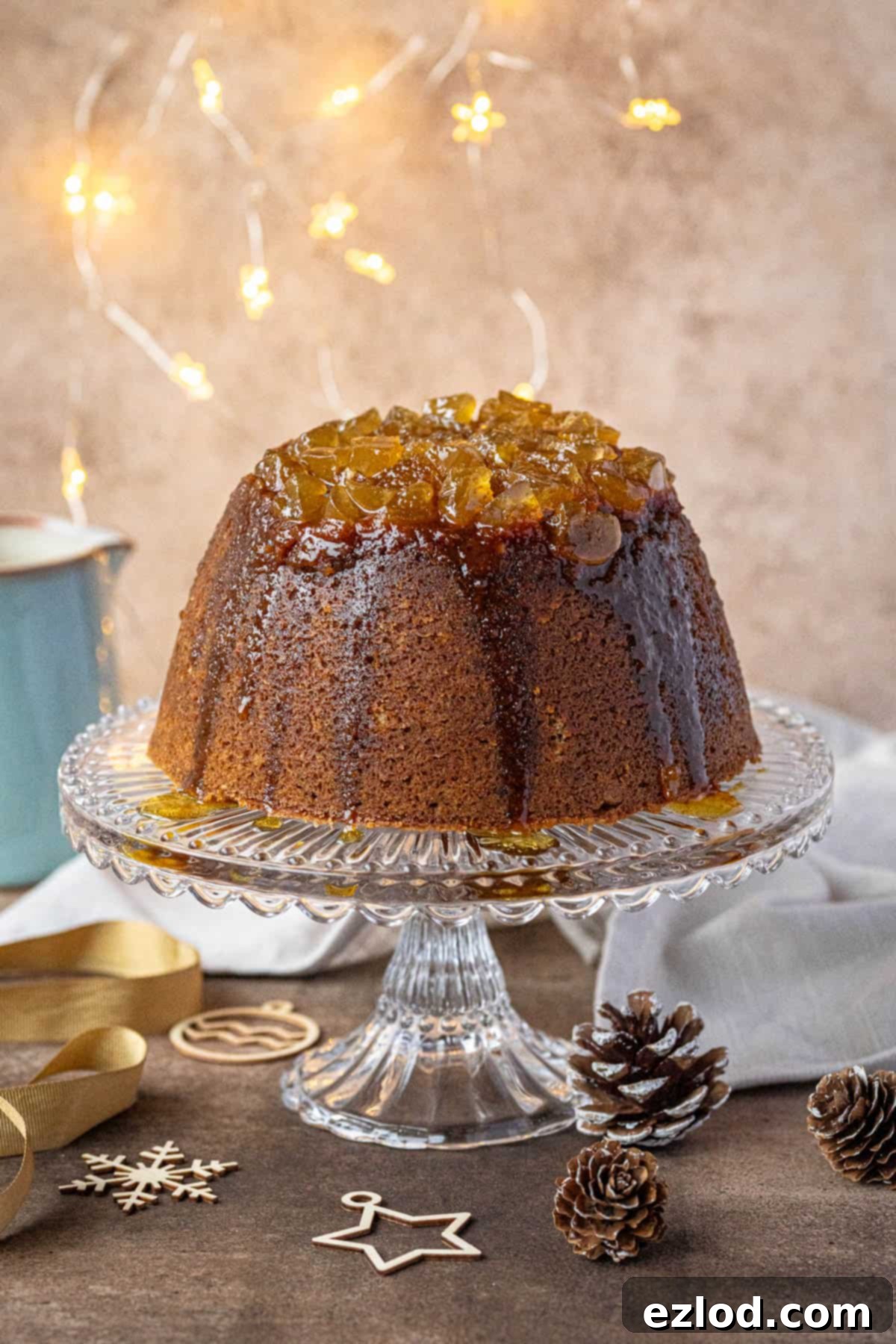Easy & Delicious Vegan Steamed Gingerbread Pudding: Your Ultimate Winter Comfort Food
There’s nothing quite like a warm, comforting dessert to chase away the chill of a cold day, and this easy vegan steamed gingerbread pudding truly delivers. It’s a hearty and deeply warming treat, bursting with that beloved fiery ginger kick that gingerbread is famous for. Perfect for cozy evenings, festive gatherings, or a special Sunday dinner, this delightful ginger sponge pudding is absolutely phenomenal served with a generous dollop of creamy custard or a scoop of your favorite vegan vanilla ice cream. It’s not just a dessert; it’s an experience that brings warmth and joy to your table, making it a stellar alternative to traditional Christmas pudding.
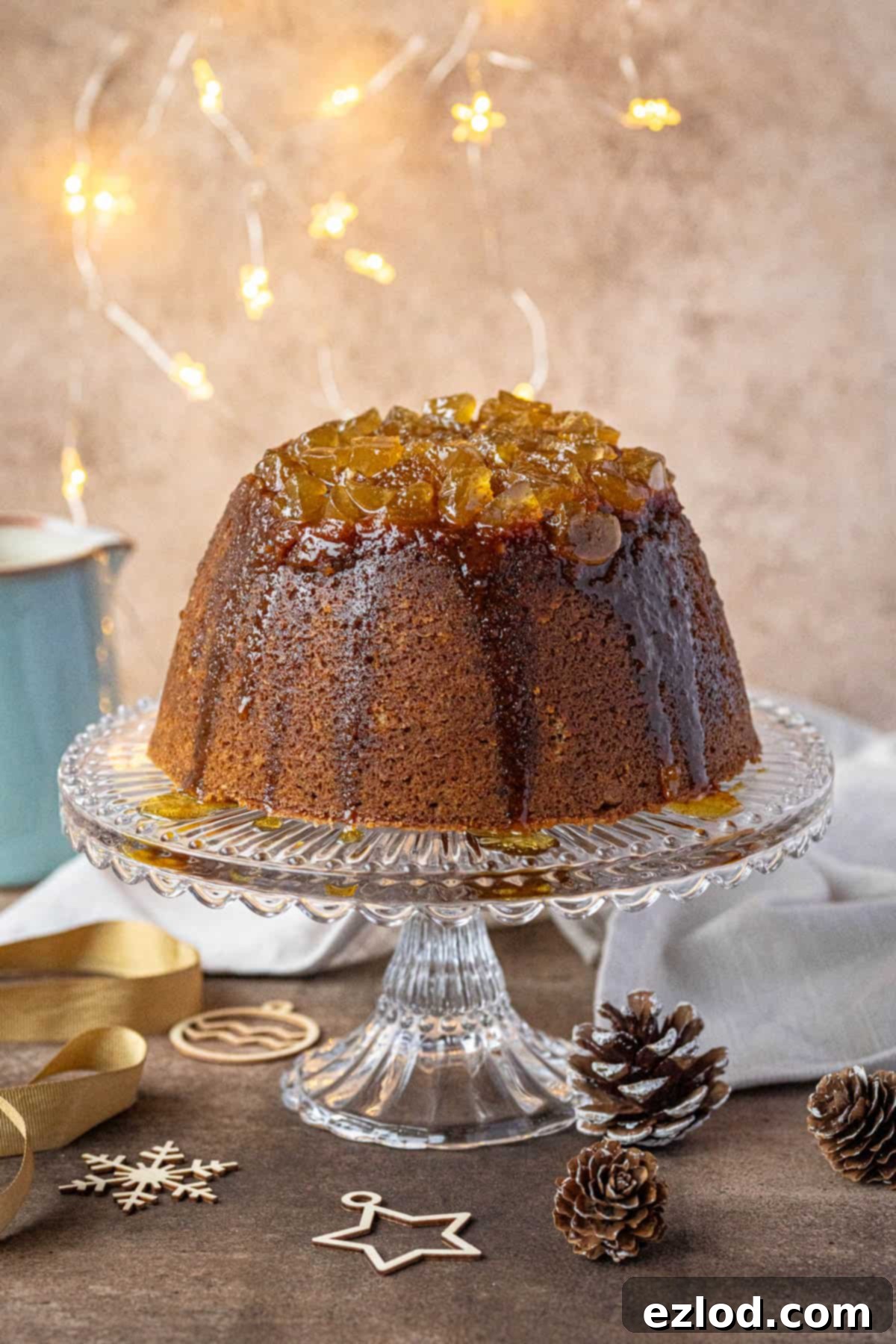
While steamed puddings might seem like a relic of the past, they are making a well-deserved comeback, and for good reason! They absolutely deserve a prominent spot on your Sunday dinner table, particularly when the weather turns crisp. Forgotten by many in favour of quicker bakes, the steaming method offers a unique texture and a depth of flavour that baking simply can’t achieve. This method ensures a wonderfully moist and tender crumb, making dry, crumbly puddings a thing of the past. Beyond their irresistible taste, these puddings are surprisingly simple to master. There’s no need to fret about over-cooking them; the gentle steaming process is forgiving, ensuring a perfect result every time.
This particular vegan ginger version is a true embodiment of comfort. It’s incredibly warming and spiced to perfection, crowned with a luscious, sticky ginger syrup topping that will have you coming back for more. Its rich, aromatic profile and comforting texture make it an ideal dessert for cold weather and those shorter, darker days. Imagine a slice of this heavenly vegan gingerbread pudding, steaming gently, its intoxicating aroma filling your kitchen – it’s a simple pleasure that feels incredibly luxurious and satisfying. Whether you’re a seasoned baker or new to the world of steamed desserts, this recipe is designed to be straightforward and rewarding.
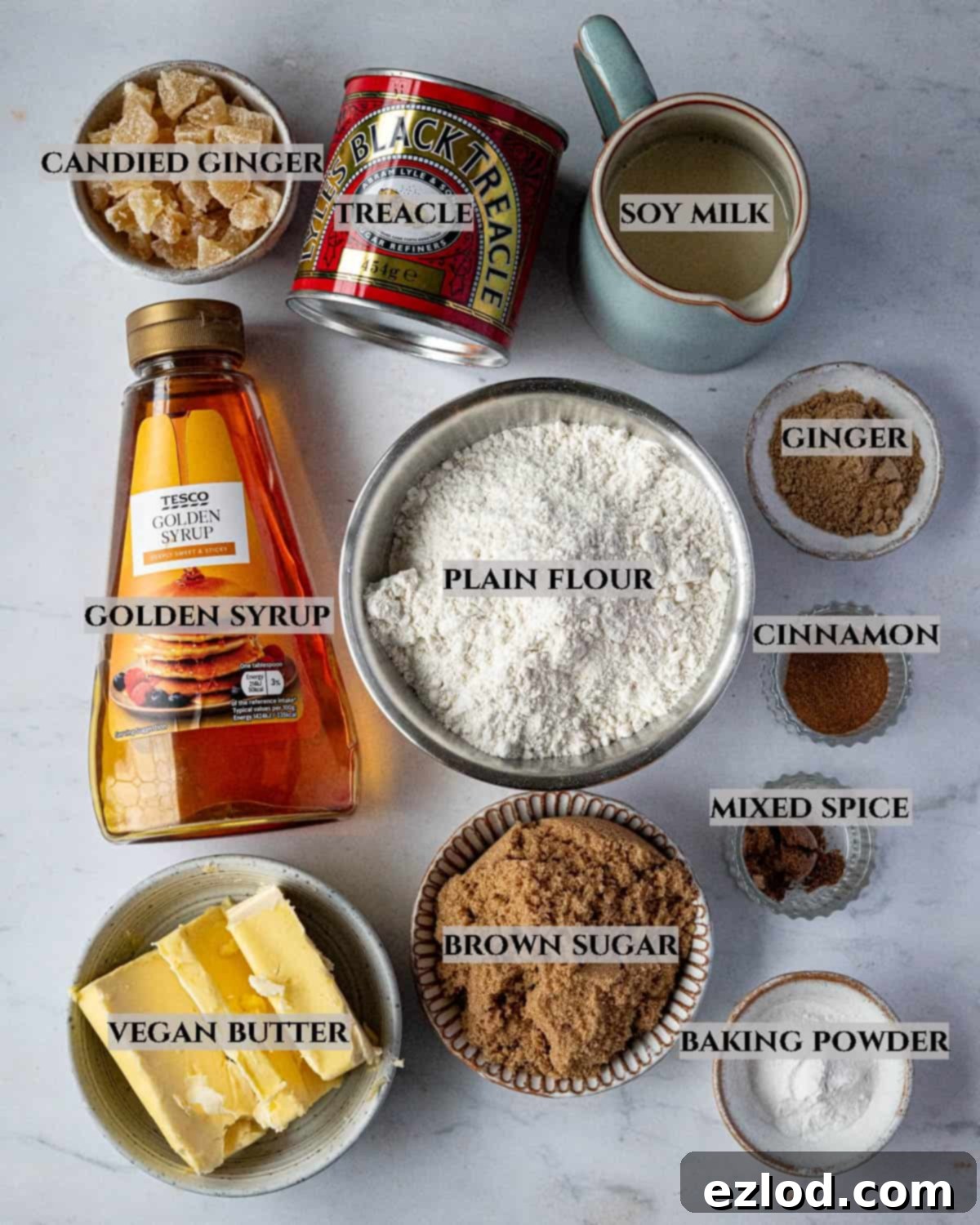
Essential Ingredients for Your Vegan Steamed Gingerbread Pudding
Crafting the perfect steamed gingerbread pudding relies on selecting the right ingredients. Each component plays a vital role in achieving that rich flavour, moist texture, and delightful spicy warmth. Here’s a detailed look at what you’ll need and why:
Plain Flour
Plain (all-purpose) flour is the foundational ingredient for our pudding’s structure. It’s ideal for achieving the desired light yet substantial sponge texture. For this specific recipe, I highly recommend sticking to plain flour. While many recipes can be adapted to be gluten-free, this particular pudding has not been tested with gluten-free flour blends. If you choose to experiment, opt for a good quality all-purpose gluten-free blend that includes xanthan gum to help with structure, but be aware that the final texture may vary.
Vegan Block Butter
For the best possible results, it’s crucial to use a high-quality vegan block butter or margarine, not the spreadable kind that comes in a tub. Spreadable margarines often have a higher water content, which can negatively impact the texture of your baked goods, making them less rich and potentially denser. Brands like Naturli Vegan Block or Flora Plant Butter are excellent choices as they behave very similarly to traditional dairy butter in baking. In this recipe, the cold butter is rubbed into the flour, a technique that creates a wonderfully tender crumb, so ensuring it’s cold is key for this step.
Brown Sugar
The choice of sugar significantly influences the pudding’s flavour and moisture. You can use either light or dark brown soft sugar, or even muscovado sugar. These sugars contribute a deeper, caramel-like sweetness and more moisture compared to white granulated sugar. Their molasses content complements the rich treacle and ginger beautifully, enhancing the overall gingerbread flavour profile. I strongly advise against substituting with white sugar, as it would alter the taste and texture considerably.
Black Treacle or Molasses
Black treacle is a non-negotiable ingredient for authentic gingerbread flavour. It provides an intense, bittersweet depth and a sticky richness that cannot be replicated. If black treacle is unavailable in your region, molasses (specifically dark or blackstrap molasses, though lighter molasses can work in a pinch) is an excellent substitute. Both contribute to the characteristic dark colour and robust flavour that defines a truly exceptional gingerbread. This ingredient truly elevates the pudding from a simple ginger sponge to a complex, aromatic dessert.
Non-Dairy Milk
Any kind of unsweetened non-dairy milk will work well in this recipe, allowing for versatility for those with specific dietary preferences. However, I find that soy milk yields the best results due to its higher protein content, which aids in structure, and its neutral flavour profile that won’t interfere with the delicate balance of spices. Almond, oat, or cashew milk are also good options. Avoid using tinned coconut milk, as its high-fat content and distinct flavour would drastically change the pudding’s consistency and taste.
Baking Powder
Baking powder is our primary leavening agent, responsible for giving the pudding its light and airy texture. It’s crucial for a well-risen and tender sponge. Please note that baking powder is not the same as baking soda (bicarbonate of soda), and they cannot be swapped interchangeably in this recipe without adjusting other ingredients. Ensure your baking powder is fresh for optimal results.
Spices
It simply wouldn’t be gingerbread without a generous blend of warming spices! This recipe calls for a classic combination of ground ginger, cinnamon, and mixed spice. The ground ginger provides that essential fiery kick, while cinnamon adds a sweet warmth. Mixed spice, a British staple, typically includes coriander, nutmeg, cloves, and allspice, adding another layer of aromatic complexity. If mixed spice isn’t readily available, you can easily substitute it with another sweet spice blend such as apple pie spice or pumpkin spice for a similar comforting flavour.
Crystallised Ginger
For an extra burst of intense ginger flavour and a delightful chewy texture, I recommend topping the pudding with chopped crystallised (candied) ginger. This adds a beautiful visual appeal and a concentrated ginger hit that complements the spice in the sponge. Alternatively, you can use stem ginger, which comes preserved in syrup, providing a slightly softer bite and an additional layer of moisture and flavour.
Golden Syrup
Golden syrup is essential for creating the signature sticky, glistening topping at the base (which becomes the top when inverted) of the pudding. Its distinct buttery caramel flavour and thick consistency are perfect for this role. If golden syrup is hard to find, good alternatives include maple syrup or light molasses. If you are using stem ginger, you can cleverly swap out half of the golden syrup for the luscious syrup from the stem ginger jar, infusing even more ginger essence into your dessert.
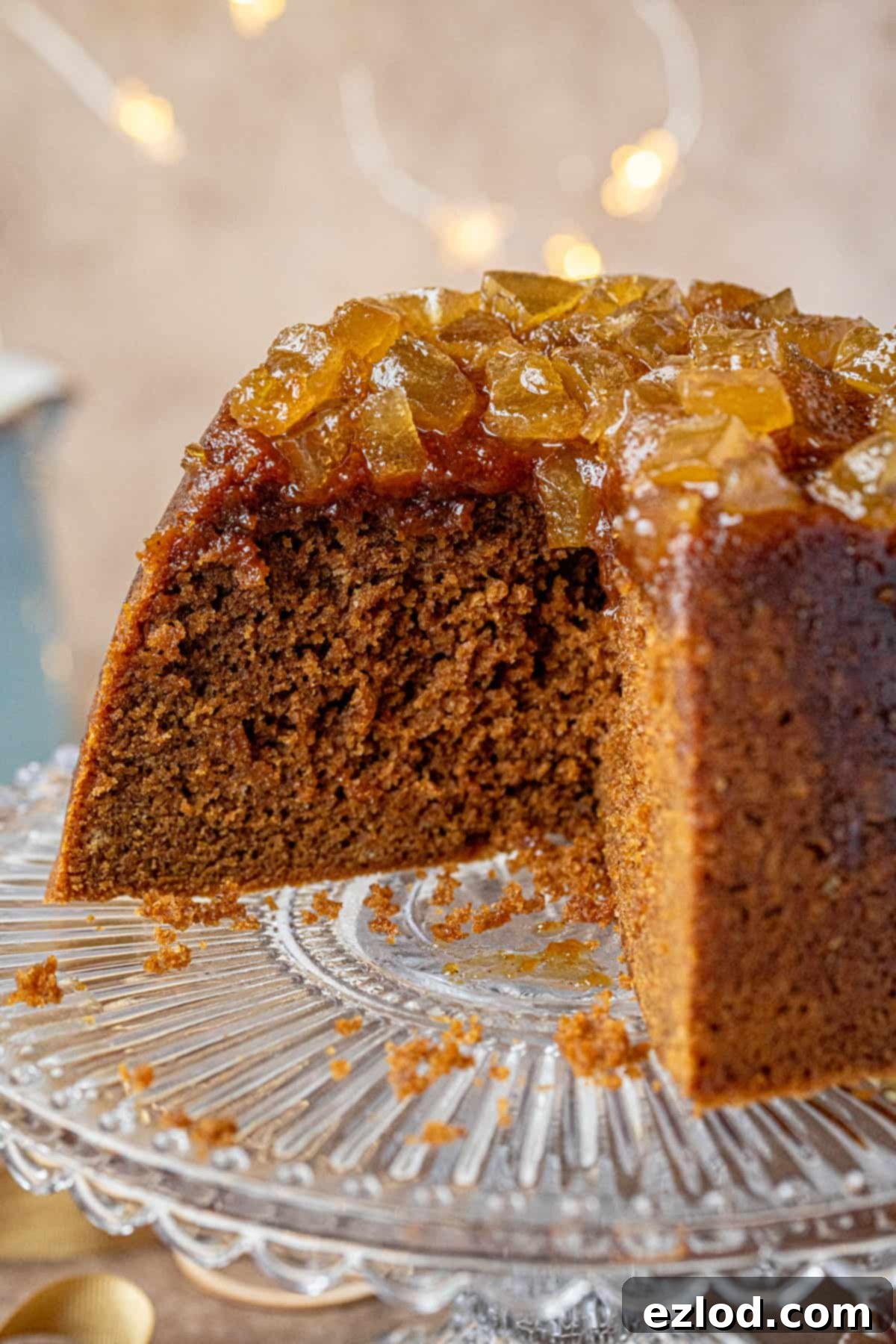
How To Make Steamed Gingerbread Pudding: A Step-by-Step Guide
(Full measurements and detailed instructions can be found in the comprehensive recipe card at the bottom of the page)
Step 1: Prepare the Pudding Basin. Begin by thoroughly greasing a 1.2-1.5 litre pudding basin. This crucial step prevents your delicious pudding from sticking and ensures an easy release later. Once greased, scatter the finely chopped crystallised ginger evenly over the base of the basin. Follow this by generously drizzling the golden syrup over the ginger. This combination will create a wonderfully sticky, sweet, and gingery topping once the pudding is inverted.
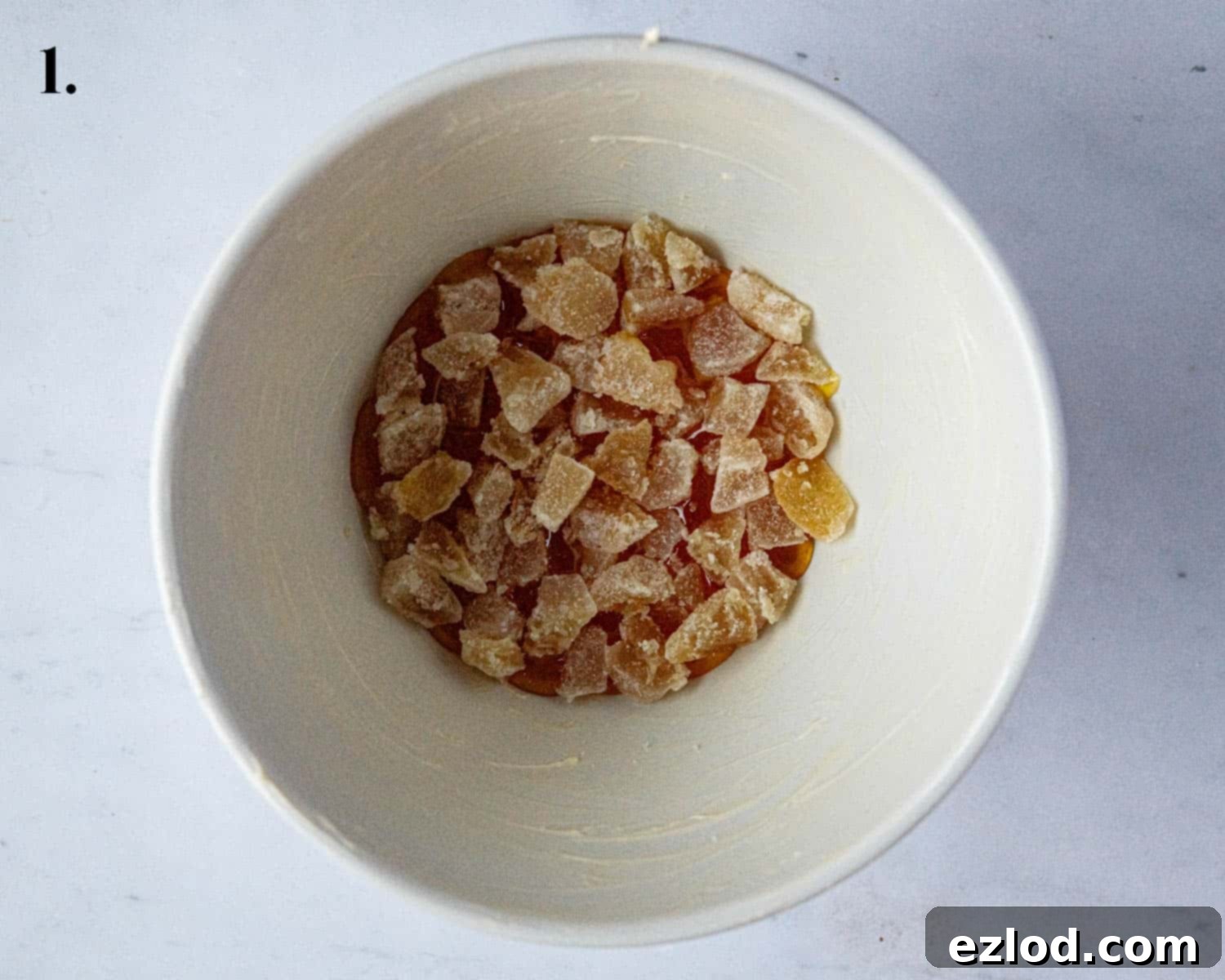
Step 2: Combine Dry Ingredients and Butter. In a large mixing bowl, whisk together the plain flour, baking powder, ground ginger, cinnamon, mixed spice, and a pinch of salt. Ensure these dry ingredients are well combined. Next, add the cold, diced vegan block butter. Using your fingertips, rub the butter into the flour mixture until it resembles fine breadcrumbs. It’s important that no visible lumps of butter remain; this technique is key to achieving a tender, moist sponge.
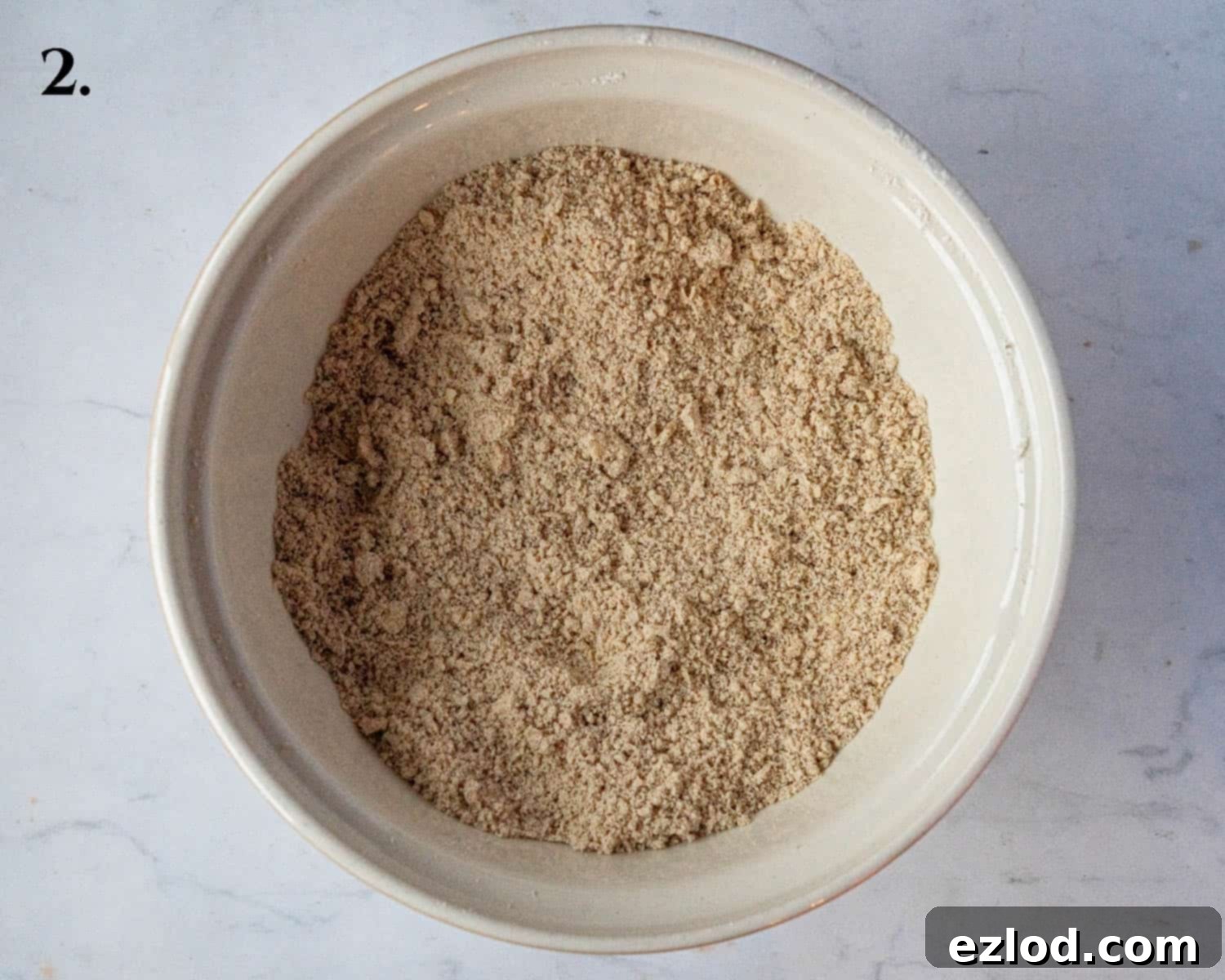
Step 3: Incorporate Wet Ingredients. Stir the brown sugar into your breadcrumb-like mixture. Once combined, pour in the black treacle (or molasses) and the unsweetened non-dairy milk. Stir everything together thoroughly until the batter is smooth, cohesive, and all ingredients are well combined. Be careful not to overmix, as this can lead to a tough pudding.
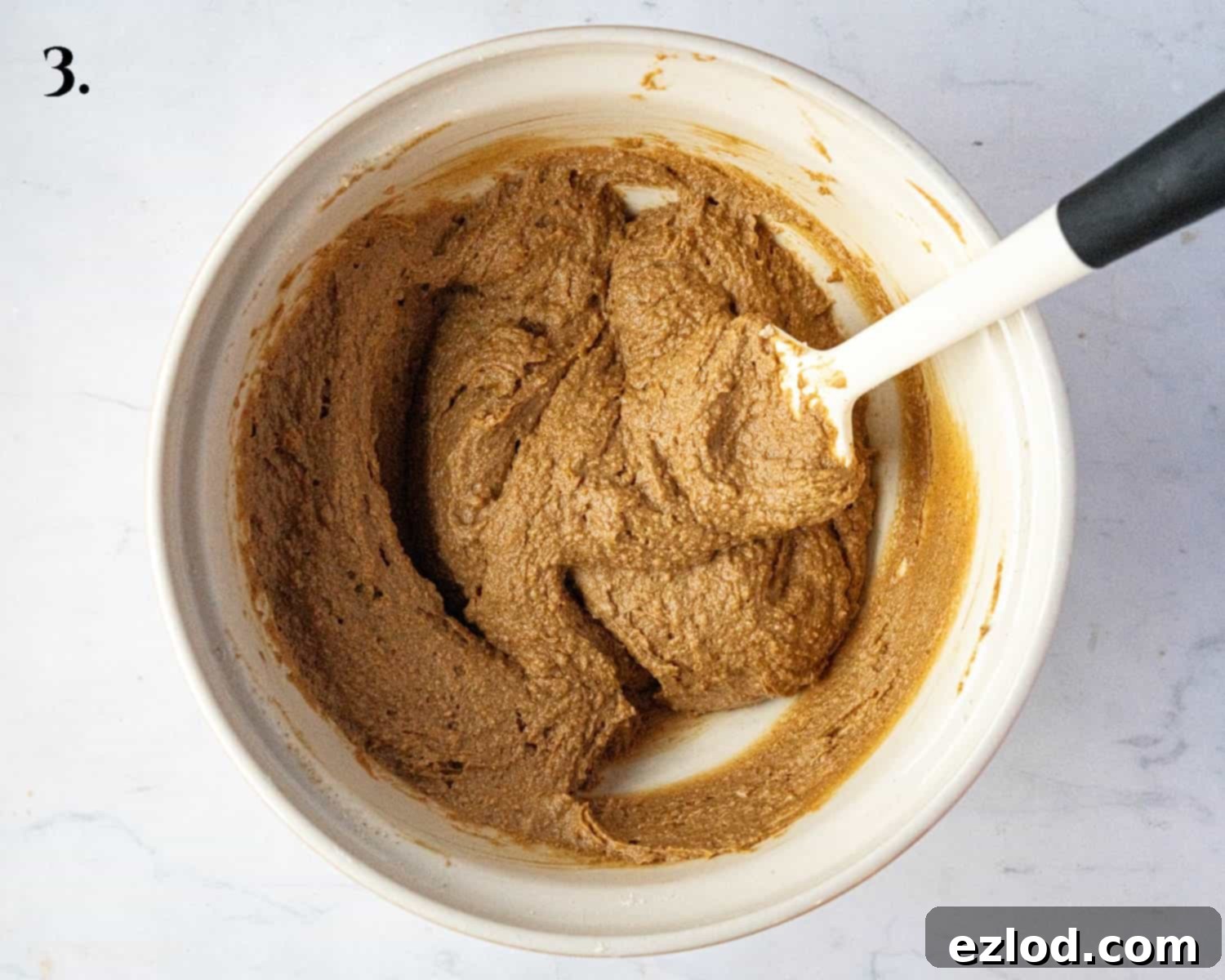
Step 4: Fill the Pudding Basin. Carefully pour the prepared gingerbread batter into your greased pudding basin, directly over the ginger and golden syrup. Use a spoon or spatula to gently spread the batter level, ensuring an even surface for steaming. This will help the pudding cook uniformly.
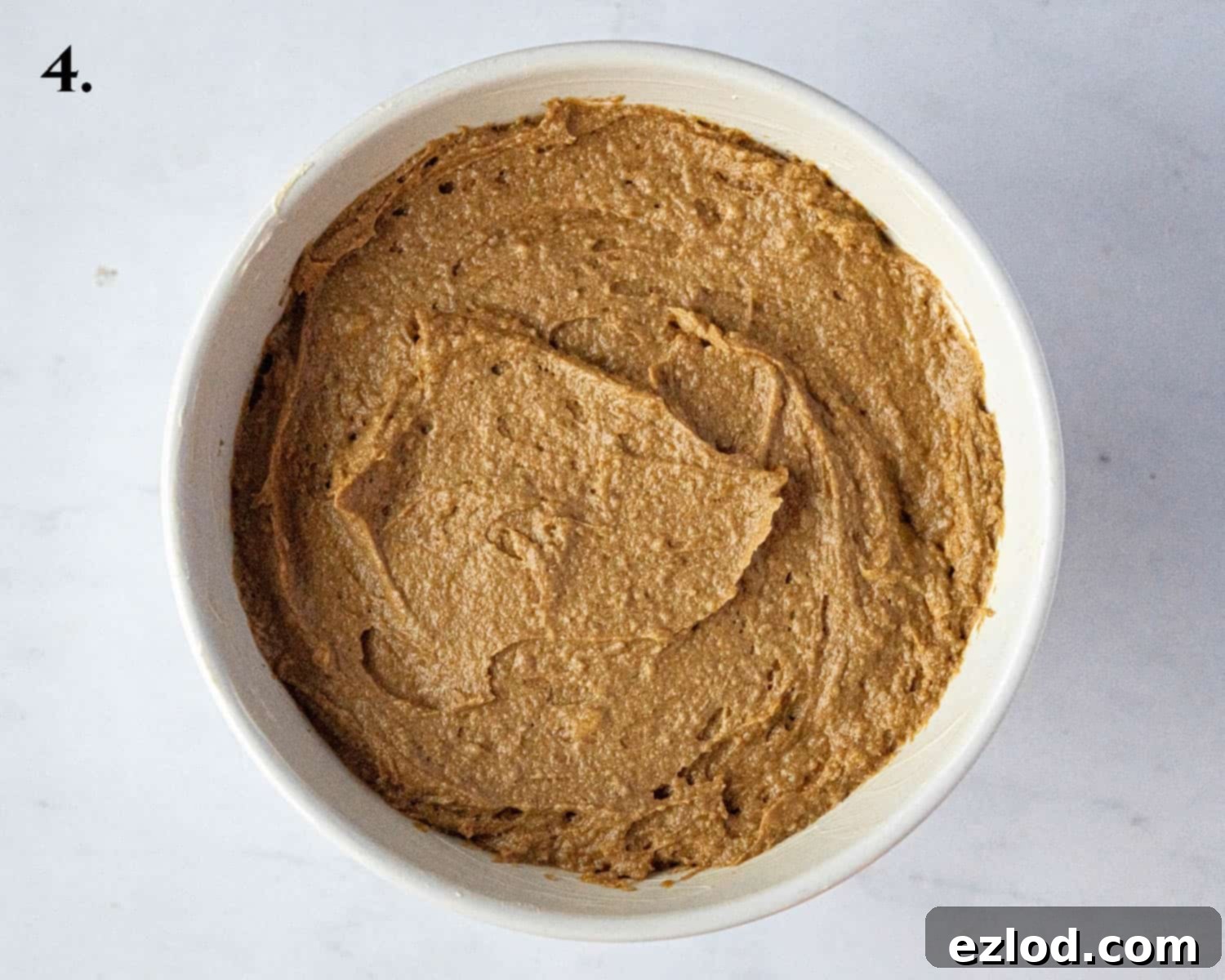
Step 5: Prepare the Pudding Cover. If your pudding basin does not come with a lid, you’ll need to create one. Cut a large square of baking parchment and an equally large square of tin foil. Critically, make a pleat in the center of both the parchment and the foil. This pleat is essential as it provides room for the pudding to rise during steaming without getting squashed. This step ensures your pudding achieves its ideal light and fluffy texture.
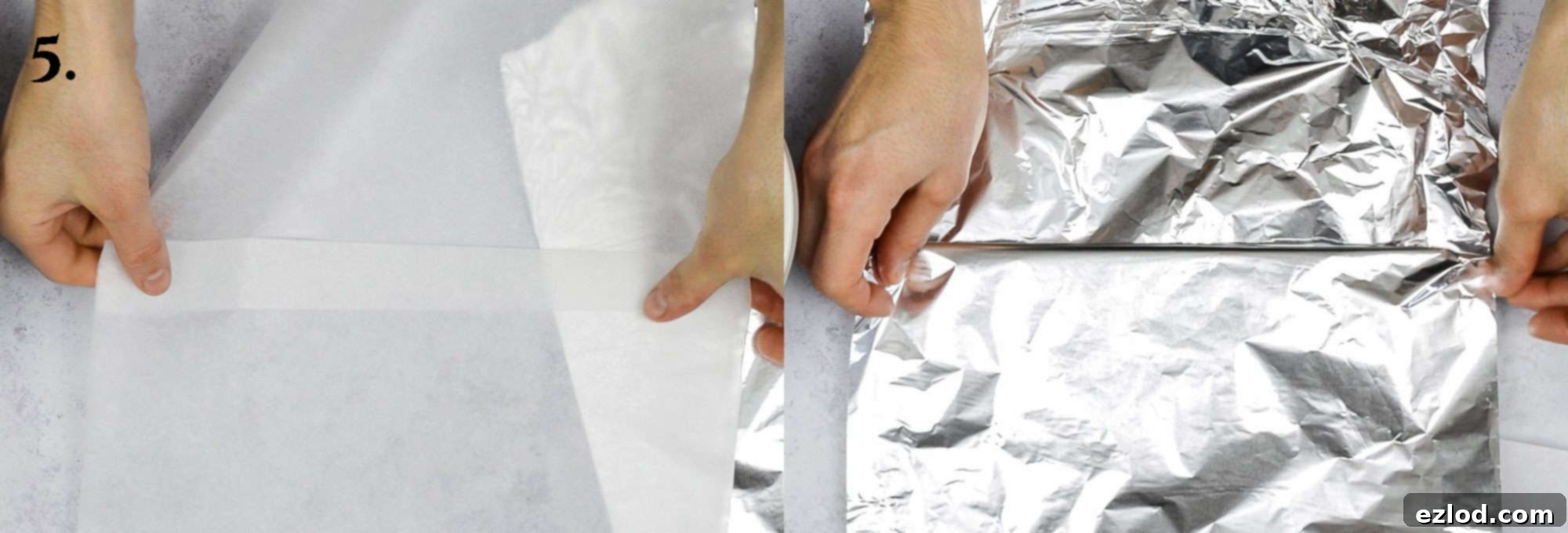
Step 6: Secure the Pudding Basin. Place the pleated baking parchment directly over the pudding basin, ensuring the pleat is centered. Follow this with the pleated tin foil, pressing the foil firmly over the edge of the pudding basin to create a seal. Next, take a length of kitchen string and tie it very tightly around the foil, just under the lip of the pudding basin if it has one. This creates a secure seal, preventing any water from entering the pudding during steaming. Finally, tie another length of string across the top of the basin, creating a handle. This handle makes it easy to lift the hot pudding in and out of the steamer. Trim any excess foil and parchment, leaving at least a centimeter below the string for added security. If your basin has its own lid, simply ensure it is securely fastened.
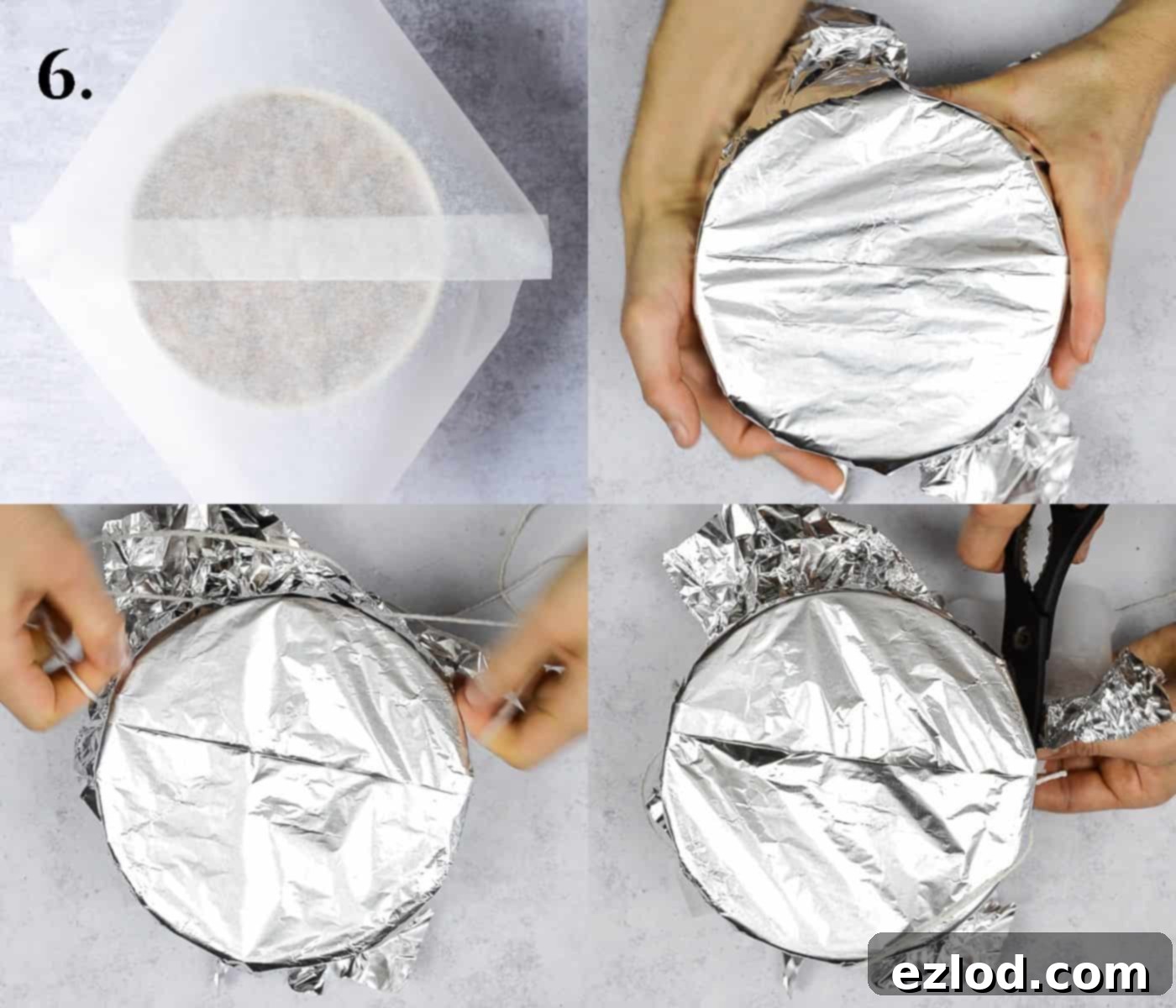
Step 7: Steaming the Pudding. Place a heatproof saucer upside down in the bottom of a large saucepan with a tight-fitting lid; this acts as a trivet, keeping the pudding basin elevated from direct heat. Carefully place the prepared pudding basin on top of the saucer. Pour boiling water into the saucepan, ensuring it comes about halfway up the sides of the pudding basin. Crucially, do not let the water level touch the foil or parchment cover, as this could lead to a soggy pudding. Place the lid firmly on the saucepan and bring the water to a gentle simmer over a low heat. Maintain this gentle simmer for two hours. During this time, the pudding will cook slowly and evenly, developing its characteristic moist and tender texture. It’s perfectly fine to let it cook a little longer if needed. Check the water level halfway through cooking and top up with more boiling water if it gets too low, but try to resist lifting the lid too often to maintain a consistent steaming environment.
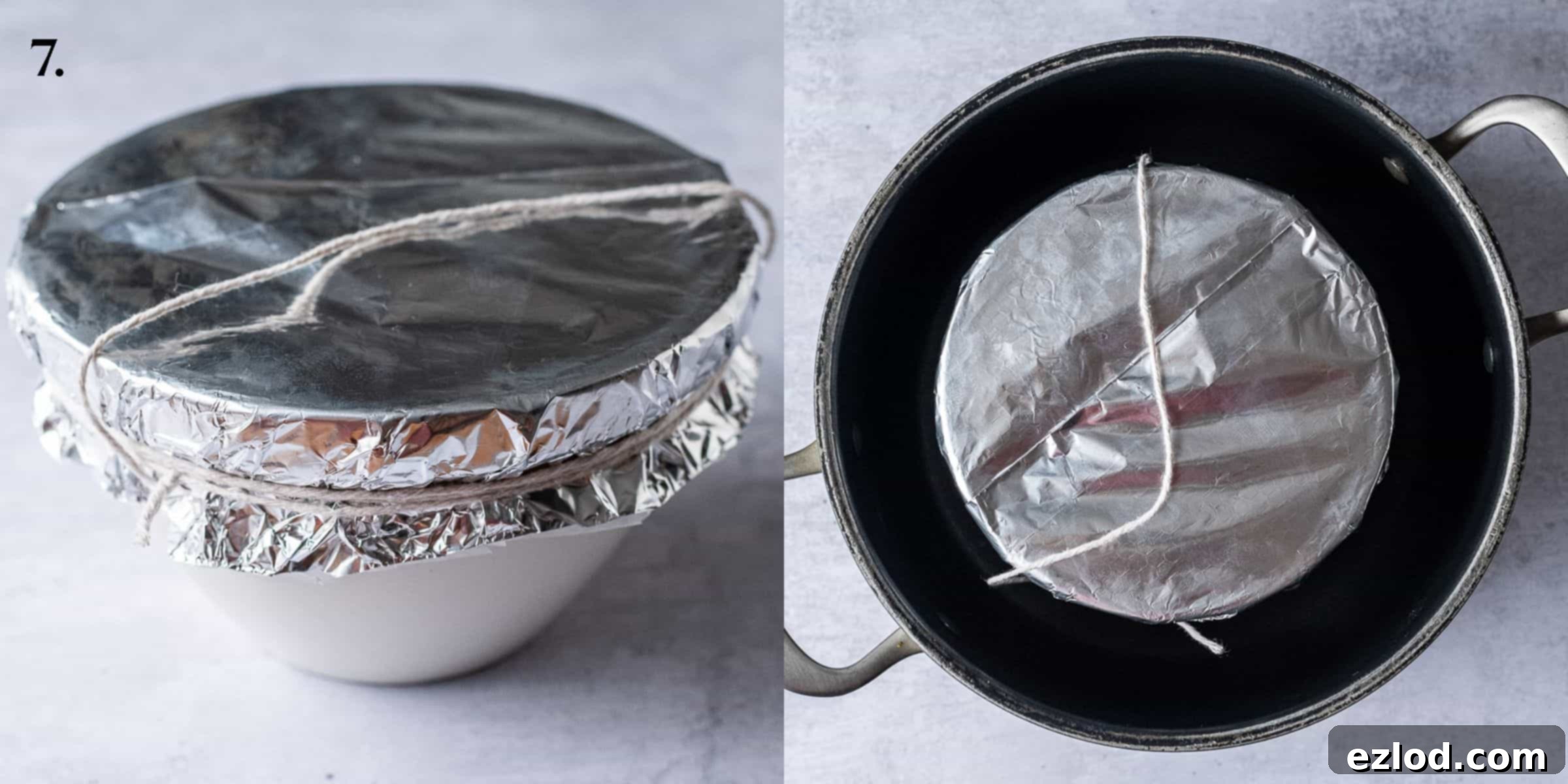
Once the two hours of steaming are complete, your vegan gingerbread pudding should be perfectly cooked. A simple test: gently press the top of the pudding (through the foil, if still covered, or after removing) – it should feel springy to the touch. For ultimate certainty, insert a skewer into the center; it should come out clean, indicating that the pudding is thoroughly cooked through. Carefully remove the pudding basin from the saucepan using the string handle. Allow it to cool slightly before uncovering. When ready to serve, remove the foil and parchment. Run a knife gently around the edge of the pudding to loosen it from the basin. Place your serving platter on top of the basin and, with a quick, confident flip, invert the pudding onto the platter. The pudding should slide out easily, revealing its beautiful sticky, gingery topping. If it doesn’t immediately release, a gentle shake or a few light taps on the bottom of the basin should help. Serve your magnificent steamed gingerbread pudding straight away, ideally with a generous pour of warm vegan custard or a scoop of dairy-free vanilla ice cream for an truly indulgent experience.
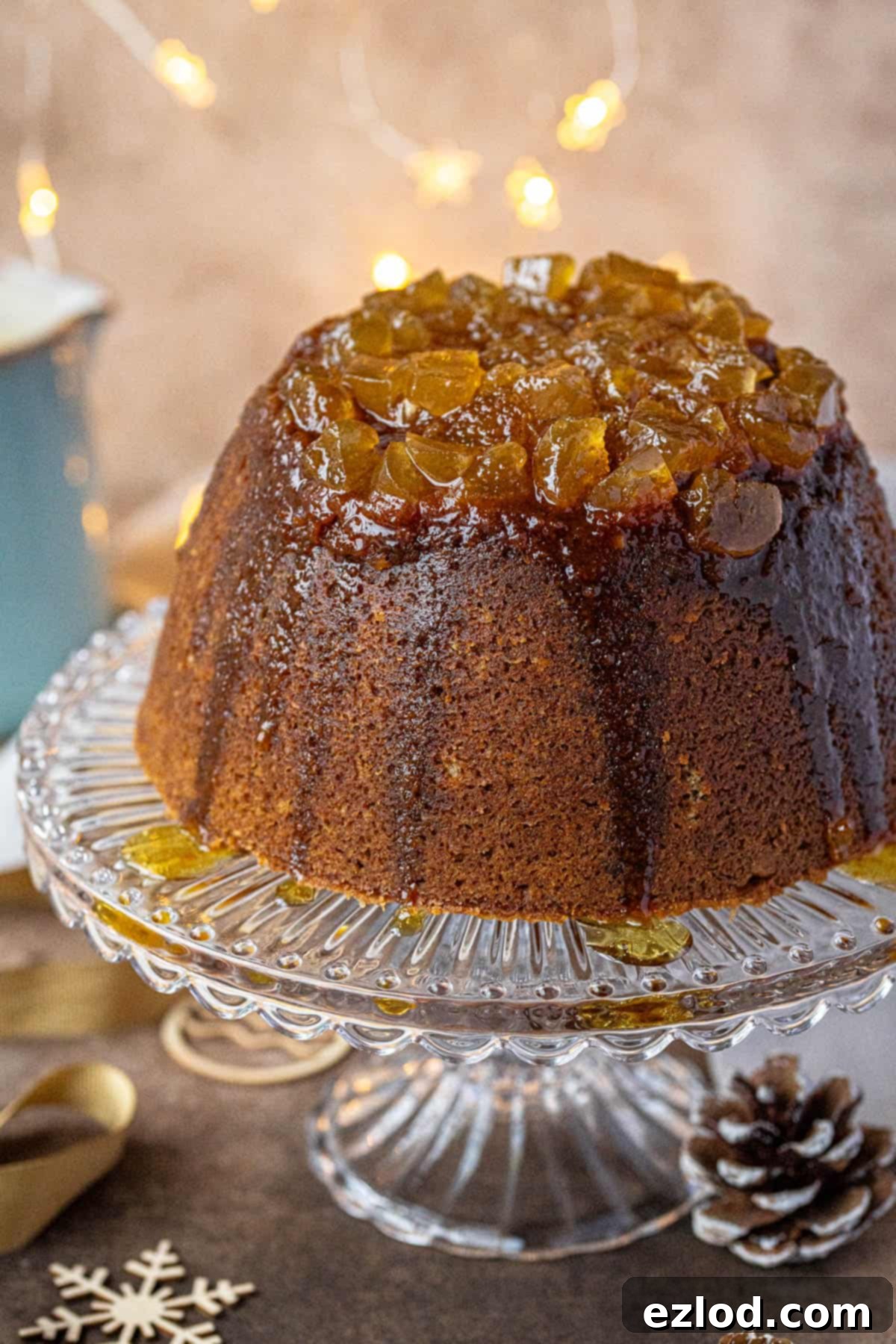
Expert Tips for the Perfect Steamed Gingerbread Pudding
Achieving a perfectly moist and flavourful steamed pudding is simple with these expert tips:
- Embrace Digital Scales: As with all my baking recipes, I wholeheartedly recommend using metric measurements with a digital scale rather than cup conversions. Cups are notoriously inaccurate and inconsistent, leading to varied results. Using a scale ensures precision, better consistency, and often, a less messy baking experience!
- Grease Generously: Don’t skimp on greasing your pudding basin. A well-greased basin is your best friend in preventing the pudding from sticking, ensuring a clean and beautiful release when it’s time to serve. Use vegan butter or a good baking spray.
- Master the Cover: If your pudding basin lacks a lid, take your time in preparing the baking parchment and tin foil cover. The pleat in the center is crucial to allow the pudding to rise without constraint. Ensure the string is tied very tightly around the basin, just under the lip. This tight seal is vital to prevent any water from seeping in and making your pudding soggy.
- Mind the Water Level: When steaming, always ensure the boiling water in your saucepan comes up about halfway up the pudding basin, but absolutely do not let it touch the foil or parchment cover. Water entering the basin will result in a heavy, waterlogged pudding.
- Smaller Puddings: If you’re catering for fewer people or prefer individual portions, this recipe is adaptable. A half batch works beautifully in an approximately 850 ml pudding basin and typically requires a steaming time of about 1 ½ hours. Adjust your cooking time accordingly, always checking for doneness.
- Doneness Check: To confirm your pudding is fully cooked, insert a skewer or thin knife into the center. It should come out clean, without any wet batter clinging to it. The top of the pudding should also feel firm and springy when gently pressed.
- Serving Suggestions: While custard and ice cream are classic pairings, consider other options! A dollop of whipped vegan cream, a sprinkle of extra crystallised ginger, or even a light dusting of icing sugar can elevate your presentation and flavour. For an adult twist, a drizzle of vegan brandy sauce or a shot of ginger liqueur can be truly decadent.
Frequently Asked Questions (FAQs):
This steamed gingerbread pudding is truly at its peak when served freshly cooked and warm, straight from the steamer. Therefore, I highly recommend enjoying it immediately for the best flavour and texture. However, if you absolutely need to prepare it ahead of time, you can cook it up to 24 hours in advance. Once cooked, allow it to cool completely before covering it tightly and storing it in the fridge. To serve, re-steam it gently for about 30-45 minutes or reheat individual portions in the microwave until thoroughly warmed through.
Any delightful leftovers of this vegan steamed gingerbread pudding can be wrapped securely in cling film or foil, or placed in an airtight container. Store it in the fridge, where it will keep well for up to 3 days. When you’re ready to enjoy it again, simply reheat individual slices in the microwave until they are warm and soft. A little extra custard or ice cream will make it feel like a brand new treat!
Yes, this vegan steamed gingerbread pudding freezes wonderfully! If you have any leftovers, or if you’d like to make a batch for future enjoyment, simply allow the cooked pudding to cool completely. Then, wrap it tightly in a double layer of cling film and foil, or place it in an airtight freezer-safe container or freezer bag. It can be frozen for up to 3 months. When you’re ready to indulge, transfer the frozen pudding to the fridge and let it defrost overnight. Once defrosted, reheat it gently in the microwave until warm throughout, and serve as desired.
More Comforting Vegan Puddings You’ll Love:
If you’ve enjoyed this warming steamed gingerbread pudding, you’re in for a treat! The world of vegan comfort desserts is vast and delicious. Here are some more of my favourite plant-based puddings that are perfect for any occasion:
- Steamed chocolate pudding
- Sticky toffee pudding
- Coconut rice pudding
- Berry and coconut steamed puddings
- Self-saucing chocolate pudding
- Spotted dick
- Eve’s pudding
- Steamed maple syrup pudding
- Rhubarb apple crumble
- Jam roly-poly
These recipes offer a fantastic array of flavours and textures, proving that vegan desserts can be just as rich, indulgent, and comforting as their traditional counterparts. Explore these delightful options to find your next favorite sweet treat!
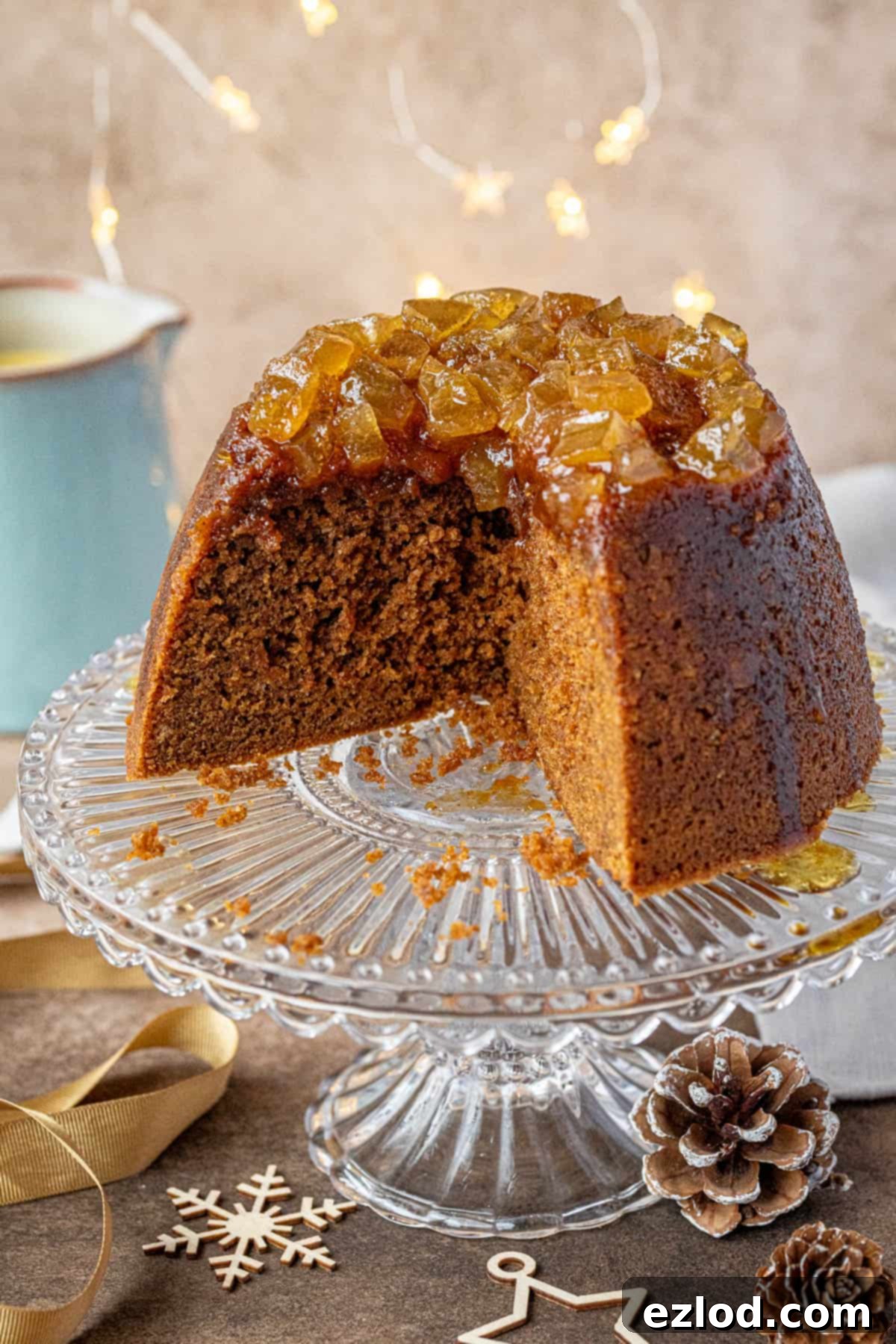
If you tried this recipe and loved it, I’d be absolutely thrilled to hear from you! Please let me know how it went by rating it and leaving a comment below. You can also share your beautiful creations on Instagram by tagging @domestic_gothess and using the hashtag #domesticgothess. Your feedback and photos are always a joy to see!
All images and content on Domestic Gothess are copyright protected. If you wish to share this recipe, please do so by using the provided share buttons. Please do not screenshot or post the recipe or its content in full; instead, include a direct link back to this post for the complete recipe. Thank you for respecting my work!

Steamed Gingerbread Pudding (Vegan)
Ingredients
For the pudding basin:
- 60 g (2 oz) crystallised (candied) ginger or stem ginger roughly chopped
- 80 g (4 Tablespoons) golden syrup
Batter:
- 250 g (2 cups) plain (all-purpose) flour
- 2 ½ teaspoons baking powder
- 3 teaspoons ground ginger
- 1 teaspoon ground cinnamon
- 1 teaspoon mixed spice (or pumpkin/apple pie spice)
- ¼ teaspoon salt
- 120 g (½ cup) vegan block butter cold and diced
- 100 g (packed ½ cup) light brown soft sugar
- 120 ml (½ cup) unsweetened non-dairy milk (I use soy)
- 80 g (4 Tablespoons) black treacle or molasses
Instructions
-
Cut a large square of baking parchment and another of tin foil. Make a pleat in the centre of each square. The pleat gives the pudding room to rise. (If you have a pudding basin with a lid you can skip this step.)
-
Place an upturned saucer in the bottom of a large saucepan with a lid and put the kettle on.
-
Grease a 1.2 -1.5 litre pudding basin well. Scatter the chopped ginger in the base and drizzle over the golden syrup.
-
Mix together the flour, baking powder, ginger, cinnamon, mixed spice and salt in a large bowl. Add the cold butter and rub it in using your fingertips until the mixture resembles fine breadcrumbs and no lumps of butter remain.
-
Stir in the sugar then add the treacle and milk and stir until well combined.
-
Pour the batter into the prepared pudding basin and spread it level.
-
Place the baking parchment on top of the pudding basin with the pleat in the middle, followed by the tin foil. Press the foil over the edge of the pudding basin.
-
Tie a length of string very tightly several times around the foil – there should be a lip on the pudding basin; tie the string just under that.
-
Tie a length of string across the top of the basin to make a handle. Trim off the excess foil and parchment, leaving at least a centimetre below the string. If your pudding basin has it’s own lid, skip the above and simply put the lid on, making sure it is tight.
-
Place the pudding basin on top of the saucer in the pan. Pour boiling water into the pan so that it comes about halfway up the pudding basin. Do not let the water touch the foil/baking parchment otherwise you may end up with a soggy pudding.
-
Put the lid on the pan and place over a low heat. Cook at a gentle simmer for 2 hours, it will do the pudding no harm to let it cook for a while longer however. Check halfway through to see if the water needs topping up but resist the urge to take the lid off the pan too often.
-
When it is cooked, the pudding should be springy to the touch and a skewer inserted into the centre should come out clean.
-
Remove the tin foil and parchment. Run a knife around the edge of the pudding to loosen it then place a serving platter on top and flip it over. The pudding should drop out of the basin (you might need to give it a bit of a shake).
-
Serve straight away with custard or ice cream.
Notes
- See post above for tips, details and step-by-step photos.
- USE SCALES. As with all of my baking recipes I really do recommend using the metric measurements with a digital scales rather than the cup conversions. Cups are a wildly inaccurate measuring system and you will get far better, more consistent results using a scale, not to mention that it is also easier and less messy than cups!
- If you can’t get hold of golden syrup then you can use maple syrup or light molasses instead. You can also swap half of the syrup for syrup from a jar of stem ginger.
